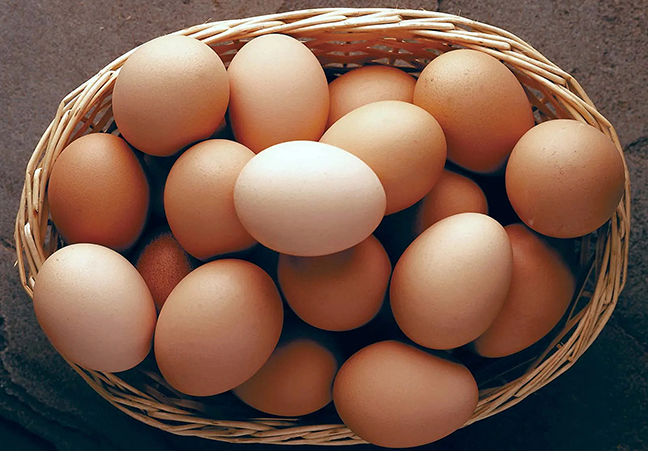Welcome!

I’ve got my eggs in high-yield CDs
“There was a time, not too long ago, when people used to eat chicken eggs.”
That’s one of the old tales I repeat to my great-grandkids these days. “You know, those ovals shaped like race tracks that come out of birds? They used to be a popular breakfast food.
“What? No, we only ate the insides and threw away the shells.The insides were made of the whites and the yolk.”
You’ve heard all the jokes about having to take out a loan to buy a dozen eggs. “I’ve got my house on the line for Saturday omelets.” Or, “Can you pay the tab? I left my eggs at home.”
Hens are having a tough time now, what with bird flu reducing egg production, inflation in general and the falling price of chicken. They find themselves being moved from one production line to another.
So sad.
But back to my lectures to my young descendants, explaining what it was like when I was growing up in the Dark Ages.
“When I was your age, well, a bit older than 5 and 4 and 2 like you, I had to get up early to feed the chickens before school.”
Indeed, in the winter months in particular, I would pull on my heavy coat and head for the barn, about 50 yards from the back door. Maybe a third of our barn’s downstairs was devoted to the chicken coop.
A screen separated it from the middle room and a door led into the coop. It had been built to milk cows, with stanchions separating individual milk stalls and a feeding trough to keep cows occupied. But we never had cows, just chickens.
The coop had a concrete floor and several laying boxes along one side. The back door of the coop led to a large fenced-in outdoor area for the hens to peck for bugs and worms.
But our chickens depended on us for their basic meals. Inside were two long troughs, one for scratch feed and the other for laying mash. The scratch was dried corn, which was kind of like roughage for us humans.
Laying mash was fine powdery chicken feed that provided the hens with most of their nutrients. It was the feed that the hens tended to go for.
We probably had about a dozen hens and a rooster. He, being the only male, was the Alpha and tended to strut his stuff.
When I arrived in the morning, I would make sure the feed troughs were full, then reach for the water bucket. Its handle was looped onto a crooked nail driven into a wooden post to keep the hens from knocking it over.
On especially cold mornings, I would find the water covered with a thick sheet of ice. I took the bucket outside and tossed the water and ice onto the ground.
Then I carried it to the house and refilled it from the outside spigot before returning it to its place in the chicken house.
Once that was done, I went to the laying boxes to look for eggs. If there was a hen in a box, I would reach under her to confiscate her eggs.
With the eggs in a basket, I took them to the house, where Mama might have breakfast ready. If I was lucky, the previous day’s production would allow scrambled eggs to carry me over until lunch at school.
Then again, I might opt for sunny-side up. Or, as a Puerto Rican I worked with a few years later said when asked by a waitress how he wanted his two eggs, “side-by-side.”
Speaking of eggs, once the subject of fertilized and unfertilized eggs came up in a high school biology class. A girl asked the teacher how they knew the eggs were unfertilized.
The teacher, with a bit of a chuckle, said, “They don’t have roosters.” The girl turned from pale white to red as a rooster’s comb.
For now, I’m looking forward to the time when eggs are no longer as expensive as truffles. And when we don’t have to substitute tomatoes on bell peppers for deviled eggs.
Here’s hoping the new year will allow us once again to put all our eggs in one basket.
Larry Penkava is a writer for Randolph Hub. Contact: 336-302-2189, larrypenkava@gmail.com.
